-
 Technology in Custom Clothing: Revolutionizing Personal Style and Fit
Technology in Custom Clothing: Revolutionizing Personal Style and FitThe fashion industry is witnessing a significant transformation in the digital age, especially in the custom clothing segment. Advancements in technology have revolutionized personal style and fit. From cutting-edge material innovations to AI-driven designs, the digital age redefines the boundaries of style and sustainability.
Custom clothing, once limited to high fashion and bespoke tailoring, is now accessible to a broader audience. Therefore, designers and businesses are embracing the technology to offer unmatched precision and personalization.
In this article, we'll explore the latest technological advancements in custom clothing and how they are reshaping the future of fashion.
The Evolution of Custom Clothing
Custom clothing tracks back to ancient China, during the Han Dynasty. Silk garments were adorned with intricate woodblock prints, often featuring three flowers in vibrant colors. It then traveled to Asia and Africa, eventually reaching Europe.
In the 18th century, clothing was made by hand and tailored to fit individuals perfectly. The process involved detailed measurements and several fittings by a highly trained tailor or seamstress.
However, after the Civil War, meeting the demand for custom-made uniforms became difficult. The standard sizing was introduced that doesn’t fit well like the custom-clothing but it was faster and scaled better.
By the 19th century, bespoke or custom clothing became a symbol of sophistication in high society. However, the mid-20th century saw the rise of industrialization, which brought about the mass production of ready-to-wear clothing. While this made fashion more accessible to the masses, it also marked a decline in bespoke tailoring. Custom clothing became less common and was reserved primarily for those who could afford the luxury.
With the introduction of “off the rack” clothing, people could just walk into the store and buy clothes. At that time, big names like Macy’s, JC Penny, and Neiman Marcus, became popular in apparel shopping.
In 2005, the average American consumer became comfortable with standard sizing. However, the sizing was a big issue. The size of one brand is not the same as the size of the other brand. Brands saw an opportunity, and custom clothing re-entered the market stronger than before.
With the advancement in technology, custom clothing can now be bought online with the flexibility of choosing the size, fabric, style, collar type, and other details on the screen. Innovations in fashion, like 3D body scanning, virtual fitting rooms, and AI-driven design tools, have made the clothing experience more personalized.
Key Technologies Transforming Custom Clothing
The custom clothing industry is undergoing a profound transformation, driven by cutting-edge technologies enhancing personalization and efficiency. Innovations such as 3D body scanning, artificial intelligence, and digital design platforms are redefining how custom garments are created and tailored. Following are the key technologies that are revolutionizing the custom clothing industry.
3D Body Scanning
This technology uses specialized scanners to capture a precise, three-dimensional digital model of an individual's body. Unlike traditional measurement methods, where there are risks of errors and inconsistencies, 3D body scanning provides highly accurate and comprehensive data on body dimensions, contours, and proportions.
The advantages of 3D body scanning go beyond just accuracy. It facilitates a simplified fitting process that saves time involved in getting oneself perfectly fitted. By crafting detailed digital avatars, designers, and manufacturers can create garments that accurately match unique bodies’ shapes. An apparel brand, TrueToForm, designs clothes using a 3D body measuring AI-powered scan app to form virtual models with exact measurements.
Moreover, 3D body scanning enhances the customization experience for consumers, allowing them to see how different styles and fabrics will look on their bodies before making a purchase.
Artificial Intelligence (AI)
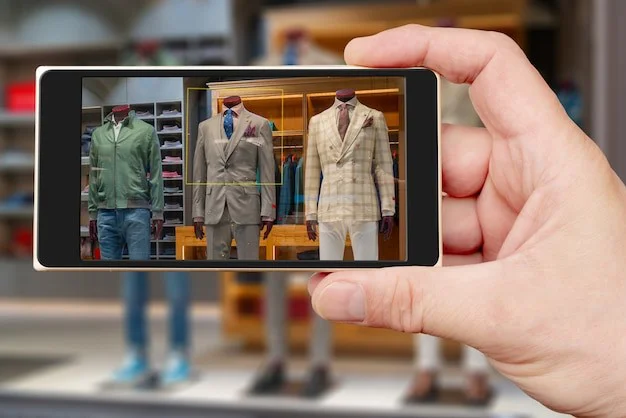
Artificial intelligence is revolutionizing the fashion industry by offering unparalleled customization and insight into consumer behavior. AI algorithms process extensive data, including style preferences and body measurements, to create stylish and perfectly fitted garments.
Tools like Google's Project Muze assist designers by suggesting innovative styles based on patterns and consumer trends, while Heuritech analyzes social media to forecast future fashion movements. The fast fashion giant Sweden’s Zara also embraces AI. Their algorithms identify patterns and predict which styles are likely to become popular in the future. This data influences their product offerings and marketing efforts.
AI also enhances customer experiences through personalized recommendations and virtual assistants. Retailers like Stitch Fix and Sephora leverage these algorithms to curate fashion selections that align with each customer's unique style and size, enhancing satisfaction and increasing the likelihood of purchase. This personalized approach not only improves the shopping experience but also drives sales by ensuring that customers discover items they are more likely to love and buy.
Digital Design Platforms

With digital design platforms, designers and customers collaborate to facilitate a more personalized design process. With the help of technology these platforms, customers can visualize their garments and make adjustments accordingly. It ensures a great customer experience as the clothing meets their specifications and is tailored to individual needs.
By utilizing advanced tools like 3D visualization and digital pattern making, digital design platforms ensure a high level of precision and accuracy in garment creation. These tools allow designers to create detailed digital models that account for every detail of a customer's body shape and measurements, resulting in a perfect fit with minimal alterations needed.
Kutetailor is a prime example of how digital design platforms are transforming the custom clothing industry. With its digital order center, customers can input their measurements, choose fabrics, and select from a wide range of styles and designs—all from the comfort of their homes. The platform's intuitive interface allows customers to visualize their garments in real-time and make any necessary adjustments.
Benefits of Custom Clothing Technology
Modern custom clothing ensures that consumers get an unrivaled level of precision and fit. Utilizing advanced tools like 3D body scanning enables one to tailor clothes to the exact measurements and every curve of a person’s body, thus eliminating inconsistencies or mistakes related to traditional measurement methods. The other benefits of incorporating technological methods in custom clothing are as follows:
Personal style
Due to the technology of custom clothing, many personalization opportunities are available. This includes artificial intelligence and digital design platforms, which have enabled customers to choose from a variety of styles, fabrics, and designs that suit their preferences. By analyzing previous purchases made and other style preferences, AI-driven platforms can suggest designs that express the customer’s fashion sense, thereby making each garment genuinely unique.
Streamlined Process
The integration of technology has significantly streamlined the custom clothing process. Digital order centers, like those offered by Kutetailor, allow customers to input measurements, select fabrics, and track their orders online, all from the comfort of their homes. This reduces the need for multiple fittings and lengthy consultations, making the custom clothing experience more efficient and convenient.
Sustainability
As customers are becoming increasingly aware of sustainable practices, they expect transparency and accountability from brands. Custom clothing technology minimizes fabric waste by utilizing precise digital patterns and measurements. The efficiency of digital design and production processes reduces the overall environmental impact. Furthermore, the ability to create high-quality, long-lasting garments tailored to individual needs reduces the frequency of fast fashion purchases, contributing to more sustainable consumption patterns.
The benefits of custom clothing technology are vast, enhancing precision, personalization, efficiency, and sustainability. These advancements are setting new standards in the fashion industry, making custom clothing more accessible and environmentally friendly while ensuring a perfect fit and personalized style for every customer.
Future Trends in Custom Clothing Technology
Wearable Technology
Wearable technology promises to revolutionize the custom clothing business with innovations such as smart fabrics and interactive clothes. For instance, smart fabrics that have embedded sensors can check several health indicators like heart rate and body temperature, thus giving instant feedback to the wearer. Athletes and fitness enthusiasts benefit from clothing that monitors heart rate, tracks movement, and provides real-time feedback.
In addition to this, another rising trend is interactive clothing that caters to the wearer’s environment or preferences. Under this kind of garment, a piece could change color or pattern depending on mood or temperature. Adaptive camouflage fabrics can be a big thing in the military as they change color to match the environment.
Consequently, clothing has become more than the fashion statement it used to be in the past; instead, it has transformed into a flexible tool for improving how one lives.
Augmented Reality (AR)

Augmented reality has the potential to revolutionize shopping by providing virtual fitting rooms. With AR technology customers have an opportunity to virtually try on clothes by using either their smartphones or AR glasses. It provides a platform where shoppers are able to see how different pieces will look or fit them without having tried them physically, hence enhancing convenience and reducing cases of returns.
Moreover, AR gives additional information about clothing, such as fabric blend, care instructions and outfit tips, which enhances the shopping experience. Eventually, when AR technology advances further, it will become part and parcel of the custom clothes sector blurring physical from digital shopping.
Conclusion
The future of custom clothing is very promising, thanks to technological revolutions. These advancements are more focused on enhancing precision, personalization, and efficiency. With AI-driven recommendations, digital design platforms, and wearable technology, bespoke and custom clothing is becoming accessible for all, maintaining sustainability. Brands are embracing these innovations to meet the unique needs and preferences of individuals and provide them with an interactive shopping experience.
FAQ
1. What are the advantages of digital design platforms in relation to custom clothing?
Digital design platforms enhance collaboration between designers and customers, allowing real-time visualization and customization of clothes. Hence, they make adjustments while tracking orders online until they reach the final consumer in a more efficient way.
2. How does wearable technology impact custom clothing?
Wearable technology, such as smart fabrics and interactive wearables, makes clothes functional. Smart fabrics can track different health indicators, while interactive clothing can adjust to the wearer’s environment or preferences. In this regard, such technologies further make custom clothing versatile and personalizable.
3. What is the future of augmented reality in custom clothing?
The most popular use of Augmented Reality (AR) technology is virtual fitting rooms. With AR customers can virtually try on clothes, see how they fit, and get detailed information about them without having to put them on physically. When online shopping for clothes, one of the latest tools that people are using today is AR on their smartphone apps or glasses. It creates 3D models that simulate real life images of apparel and body scanning so that they will fit well in the virtual store.
MORE 2024-07-30 -
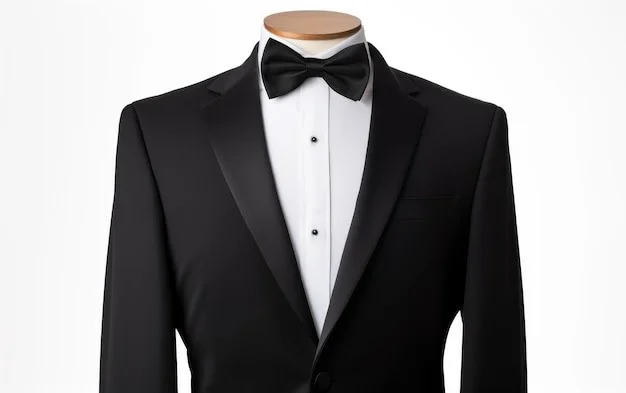 Types of Tuxedos: The Ultimate Guide for 2024
Types of Tuxedos: The Ultimate Guide for 2024For every formal event, the tuxedo is a remarkable statement depicting elegance, sophistication, and timeless style. Originating in 1865, a formal lounge suit without the fancy trimmings of the traditional tailcoat was designed especially for the fashionable Prince Edward VII. Since then, tuxedos have evolved from simple evening jackets into a symbol of class and style, carrying the legacy of refinement into the present day.
From timeless classics to bold choices, tuxedos have reserved a special place in the male wardrobe. However, with so many styles, cuts, and details, one gets confused when selecting the perfect tuxedo. This ultimate guide will provide a detailed insight into various types according to different body types and personal styles. So, keep reading.
What is a Tuxedo?
Before diving into the types, it is important to understand what a tuxedo is and its basics. A tuxedo is a formal attire worn by men. It can be identified by satin or grosgrain facings on the jacket's lapels and buttons and a similar stripe along the outseam of the trousers.
The Difference Between a Tuxedo and a Suit
What sets a tuxedo apart from a suit is the satin detailing usually found in the lapel, buttons, or a stripe down the pants. It is formal wear reserved for evening events requiring black tie attire, such as weddings, galas, or formal dinners. Tuxedos are pricier, starting from 400$. However, rental options are easily available.
Suits are casual due to the absence of satin details. They consist of a traditional jacket and trousers made of fabrics like linen or flannel. Suits are more suitable for semi-formal meetings and casual occasions. They usually come in an affordable price range.
Basics of a Tuxedo
- Jacket with satin or silk lapels in peaked or shawl style
- Trousers with a satin or silk stripe running down the side
- Shirt made of cotton or blend with a pleated front, French cuffs, and a collar.
- Bow Tie a black silk one
- Accessories (cummerbund, waistcoat, cufflinks, leather shoes)
Different Types of Tuxedos
Classic Tuxedo
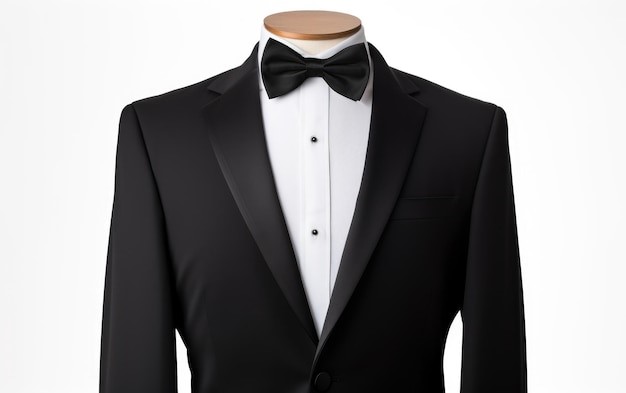
The classic tuxedo is the most original and traditional type of tuxedo. The black wool jacket with satin lapels and trim is a symbol of timeless sophistication. It is accompanied by a black trouser with a matching satin stripe down each leg. The white shirt has a pleated or bib front with French cuffs. It also features elements like a single-breasted jacked with elegant shawl or peak lapels. Styled with a black bowtie, complete the look.
It is ideal for formal evening events like weddings, galas, or high-profile events. When it comes to styling, accessories like a black waistcoat or a cummerbund add a touch of refinement. Go for shoes that don’t clash with the main attire, therefore, go with patent leather shoes for a refined look.
Shawl Collar Tuxedo
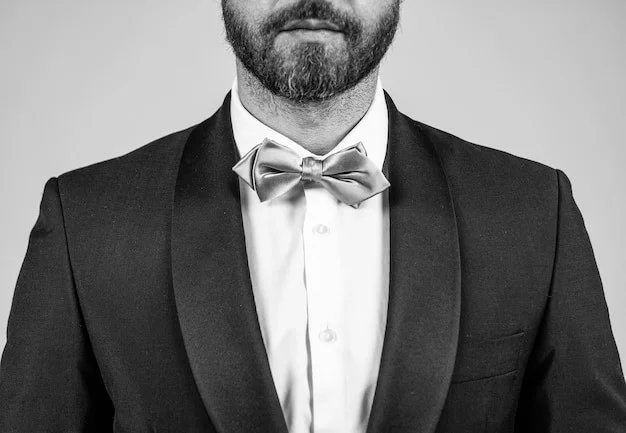
The shawl-collar tuxedo is a sophisticated choice for formal occasions. It is known as James Bond's famous style as it became his style statement in his movies. Its defining feature is the sleek, rounded, continuous lapel that gracefully transitions from the collar to the front closure. The black wool jacket with satin facings along the collar, a crisp white dress shirt, and a black bow tie create a stylish and elegant look. The patent leather shoes complete the look.
Shawl lapels are less formal but a go-to style for black-tie events. Adding a double-breasted vest gives an uber-chic look. For extra elegance, add cufflinks, a dress watch, and a discreet lapel pin.
Peak Lapel Tuxedo
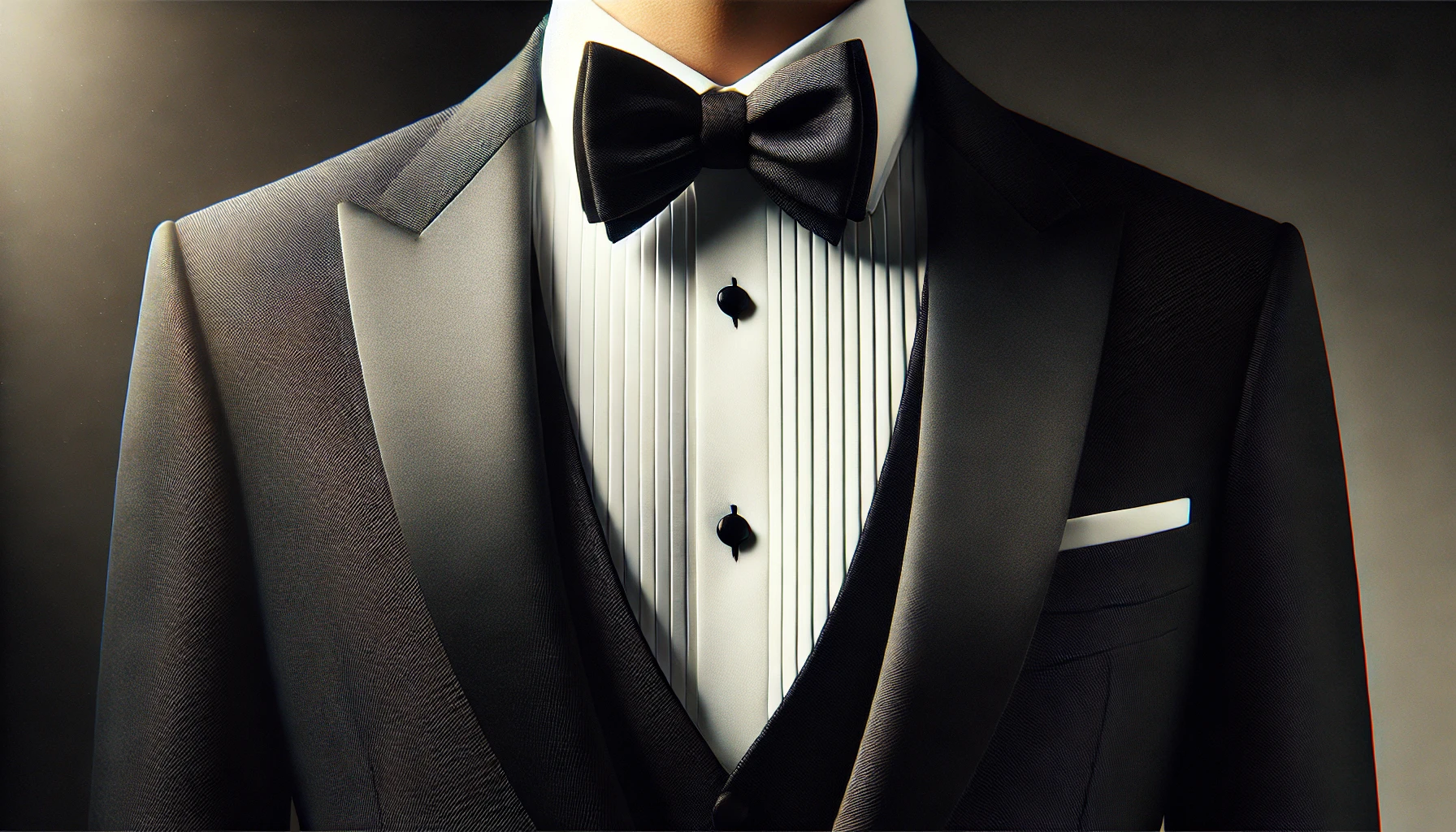
The peak lapel studio is a classic but fashionable choice for formal occasions. Its distinguishing feature is the V-shaped, upward-pointing lapel and outward-facing collar. The single-breasted tuxedo jacket enhances its formal appearance. It pairs well with a white dress shirt, black bow tie, and patent leather shoes.
The wide neck collar and pointed ends enhance your silhouette, making you look slimmer and taller and leaving a lasting, stylish impression. If you want to have a more confident and impactful look at formal occasions, you can make a bold choice by going with a double-breasted peak lapel suit.
Notch Lapel Tuxedo
The notch lapel tuxedo is a versatile option that blends traditional and modern styles. It features a small notch where the jacket meets the lapel and offers a relaxed and modern vibe. Notch lapel has a more casual use, and it is suitable for both formal and semi-formal events. Do not wear at formal black tie events, rather, go with a peak or shawl lapel.
Ensure the tuxedo is well-tailored to fit your body perfectly. A tailored fit enhances the overall look and adds to the sophistication. For added formality, wear a black cummerbund or waistcoat. Moreover, polished black patent leather shoes are ideal for a formal look.
Double-Breasted Tuxedo
A double-breasted tuxedo is a stylish choice for formal occasions. This tux style has been famous among 80’s Wall Street brokers and made a comeback in 2023. It features material at the front of the jacket that overlaps, displaying two rows of buttons when fastened. This design highlights the shoulders, making the wearer more impactful.
For styling a double-breasted tux, you can add a pocket square in a coordinating color (white or black) in the breast pocket. Keep the look minimal and avoid additional accessories. However, a classic dress watch can add a subtle touch of style to the look.
Slim Fit Tuxedo
A well-tailored slim-fit tuxedo offers a sleek and modern silhouette for special occasions. The jacket cut slimmer through the chest and waist with narrow, well-defined shoulders. It also features satin facings on the lapels, which can be notch, peak, or shawl-style. The trousers are slim through the thighs and tapered towards the ankles, typically with a satin stripe for formal occasions.
It is Ideal for modern weddings, black-tie events, galas, formal dinners, and award ceremonies. For a sophisticated look, the fit is perfect without being too tight. Keep the accessories minimal and modern.
Velvet Tuxedo
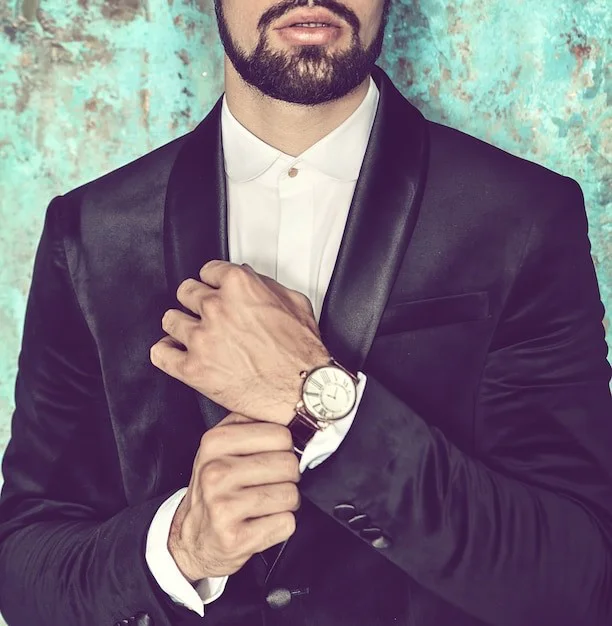
Tuxedos made of super soft velvet add rich texture to your looks. The matching dinner jacket and suit trousers are both made from velvet fabric. Velvet tuxedos come in classic black and navy colors to bold shades like burgundy, emerald green, and even purple or pink.
In winter, a velvet tux keeps the wearer warm as it is quite heavy. However, while wearing the velvet jacket, it appears as light as wool. It is perfect for black-tie events, weddings, or any special occasion.
White Tuxedo
A white tuxedo is a stylish choice for formal occasions, especially in warmer climates. It doesn’t feature a satin lapel, which is why it is a unique type of tux. However, if you choose to have a lapel in the white jacket, make sure it is black. It consists of an off-white dinner jacket paired with black pants. You can also choose white trousers for a monochromatic look. A white tuxedo depicts a sense of luxury and style. Simple cufflinks, a classic dress watch, and a white pocket square can add refined details without overdoing it.
Colored Tuxedos
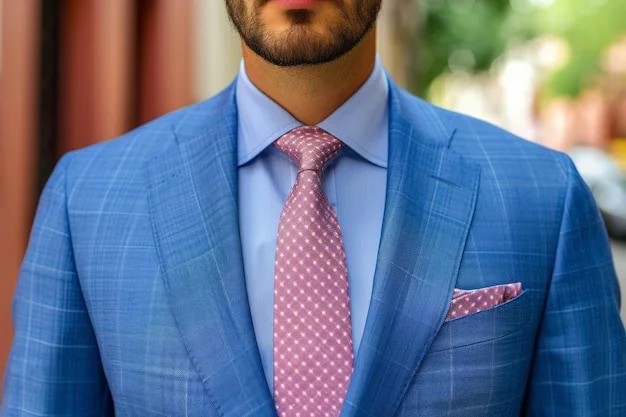
Colored tuxedos are perfect for those who don’t want to blend in the crowd and want to make a bold statement. It offers a refreshing twist on traditional black-and-white formalwear. They come in milder hues to bold ones. Shades like navy, burgundy, emerald green, and even lighter pastels are preferred for a more striking appearance.
The jacket has a satin lapel in notch, peak, or shawl. Pairing a colored tuxedo with complementary trousers, a crisp dress shirt, and a pocket square will show style and individual expression.
How to Choose the Right Tuxedo Type
Choosing the right tuxedo begins with understanding the unique preferences and needs of the wearer.
Occasion
Before selecting anything, consider the formality level of the event for which the tuxedo is required. For formal events that call for black-tie suiting, like weddings, galas, award ceremonies, and high-society dinners, a classic tuxedo never goes wrong. Meanwhile, for semi-formal events, you can get creative with styles and colors.
Fit and Body type
Different types of tuxedos fit every body type differently. The right fit can make or break your look. Pay attention to details like sleeve length, shoulder width, and trouser length. A well-fitted tuxedo will complement your body shape. Peak-label tuxedo and slim-fit tuxedo makes you look slimmer and taller. If you have an athletic body, classic or modern fit tuxedos with structured shoulders and a tapered waist will complement your body structure.
Lapel choice
Lapels are the most significant factor that defines the tuxedo style. For formal wear, peak lapels, and rounded shawl lapels depict elegance. While in semi-formal tuxedos, notch lapels add a contemporary touch. Peak lapels complement wearers with broad chests and shoulders while for leaner bodies, shawl lapels are more suitable.
Fabric
When selecting a tuxedo, one must look for the fabric and color that will suit one's personal style and body. In tuxedos, wool is the popular choice of fabric. Linen and cotton also add a touch of coolness in summer. Meanwhile, in winter, velvet tuxedos can add warmth and versatility.
Pricing
Tuxedos are generally pricier than suits. You have the option to customize your tux according to your style, or you can also go for off-the-rack options for affordability. Customized tuxedos ensure a personalized and precise fit that enhances comfort and appearance. While off-the-rack options are affordable and readily available for immediate purchase or rental, offering convenience for last-minute needs or standard sizes.
Customization option
Tuxedos are a symbol of timeless elegance but it is also a way of expressing oneself. Made-to-order manufacturers like Kutetailor offer customization options according to the exact measurements, ensuring a flawless fit that enhances your silhouette and comfort. They provide the option to select fabric, color, lapel style, buttons, etc. according to one's liking.
Conclusion
Whether you prefer classic black tie elegance or opt for a bolder statement with colored or velvet options, this ultimate guide will help you leave a lasting impression. Whether you choose a custom-tailored fit or the convenience of off-the-rack styles, the key is selecting a tuxedo that fits perfectly and matches the event's formality. Small details like accessories, shoes, shirt styles, etc. can help you to achieve a timeless look.
FAQ
1. What is the most formal tuxedo?
The most formal tuxedo is typically considered to be the classic black tuxedo with a black satin or grosgrain peak or shawl lapel. Moreover, double-breasted tuxedos demonstrate a sense of formality making them suitable for formal occasions.
2. What tuxedo does James Bond wear?
Shawl Collar Tuxedo is worn by Pierce Brosnan in all his James Bond movies. This style of tuxedo is known as the James Bond style tuxedo.
3. Why is a tuxedo so expensive?
Tuxedos are made of premium fabrics like satin and silk. These luxury fabrics are expensive, hence increasing the price of the tuxedo. Moreover, the craftsmanship and effort that go into the level of detail used in stitching a tuxedo increase the cost.
MORE 2024-07-26 -
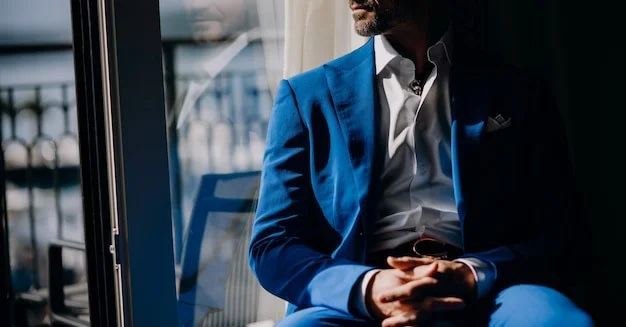 Latest Trends in Men’s Suits: Insights and Strategies for 2024
Latest Trends in Men’s Suits: Insights and Strategies for 2024The evolution of men’s suits has been a journey marked by timeless elegance and ever-changing trends. From the structured lines of the 1920s to the relaxed sophistication of modern cuts, each era has left its distinctive imprint on men’s fashion.
In today's fashion-forward world, men are more eager than ever to redefine their style each season with a fresh suit. As fashion continues to evolve, so do the trends in custom tailoring with the focus shifting more towards innovative fabrics and personalized touches.
Understanding the latest trends in men's suits is key to looking your best and making a statement. So if you are curious about the hot trends for this year, you're in the right place. In this guide, we’ll explore what is trending in 2024 and offer insights into the latest styles, helping you find the perfect suit to enhance your style and confidence.
Sustainability in Suit Fabrics
As the fashion industry embraces sustainability, eco-friendly materials and innovations in sustainable fabrics are transforming the world of men’s suits. Designers, tailors, brands, and distributors are increasingly prioritizing environmentally conscious choices, ensuring that elegance and ethics go hand in hand.
Eco-friendly materials
The demand for eco-friendly materials is on the rise, with consumers becoming more conscious about the environmental impact of their purchases. Eco-friendly materials that are sourced and produced with minimal impact on the environment, promote a more responsible approach to fashion.
Key eco-friendly materials include:
- Organic Cotton: Grown without harmful pesticides or synthetic fertilizers, organic cotton is a popular choice for sustainable suits, offering comfort and breathability.
- Linen: Made from the flax plant, linen is biodegradable, requires less water to produce, and offers a stylish, lightweight option for suits.
- Hemp: Hemp is a fast-growing plant that requires little water and no pesticides, making it an excellent eco-friendly fabric choice.
Innovations in Sustainable Fabrics
Innovations in sustainable fabrics are driving the fashion industry towards a greener future. Brands are embracing these eco-friendly fabrics, creating high-quality, stylish suits that appeal to eco-conscious consumers.
Some of the notable advancements include:
- Organic wool
Organic wool stands out for its production without synthetic chemicals and adherence to high animal welfare standards, offering warmth and durability with a reduced environmental impact.
While wool remains a timeless choice for suits, the latest trends in men's suits in custom tailoring emphasize texture-rich fabrics like wool blends and tweeds. Wool blends, incorporating fibers such as silk or linen, offer a luxurious feel and subtle sheen that epitomize elegance.
- Recycled Fibers
Recycled fibers are a rising trend in men's fashion, offering sustainable suit options without compromising style. Materials like recycled polyester, wool, and cotton are reprocessed from waste, reducing environmental impact and conserving resources.
Modern Silhouettes and Cuts
Designers are experimenting with contemporary shapes, including oversized jackets reminiscent of the 1980s Armani era. These modern silhouettes offer a fresh take on classic tailoring, emphasizing comfort and individuality.
More Relaxed and Comfortable Fits
The trend leans toward broader cuts that are roomier through the chest, shoulders, and trousers. Think of the elegance seen in the 1930s and 1940s, evoking icons like Fred Astaire or Gary Cooper. Moreover, Kutetailor is a China-based MTM brand and it embraces both formal and casual styles.
Men are focusing on the combination of comfort and style, hence, lightweight and breathable fabrics such as linen and cotton are becoming increasingly popular in custom tailoring.
Casual Wear Influence on Formal Suit
The line between formal and casual wear blurs. Designers encourage mixing and matching suit separates, like pairing a tailored jacket with trousers that complement it, avoiding the perfectly matched suit. This approach allows for versatility and a smart yet unstuffy ensemble.
Fabrics for custom smart casual find their way into formal suits. Unconventional materials like tweed, corduroy, or even denim-inspired textures add depth and character to traditional suits, making them suitable for various occasions.
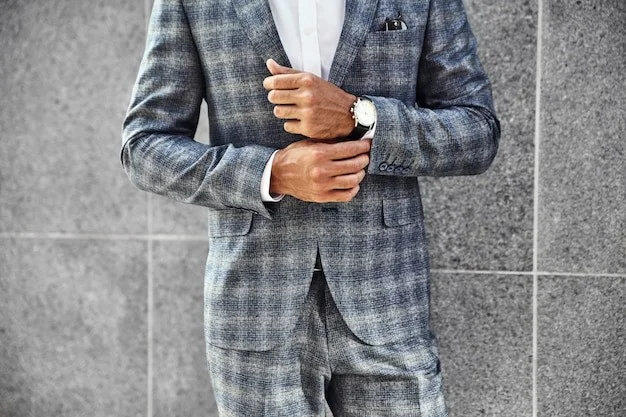
Technological Integration
The integration of technology in men's suits is revolutionizing the fashion industry, bringing together style, innovation, and convenience. From smart textiles and wearable technology to 3D body scanning and digital tailoring platforms, here’s how technology is transforming the way we design, fit, and wear suits.
Smart Textiles and Wearable Technology
Smart textiles embedded with sensors can monitor body temperature, adjust ventilation, and even charge your devices wirelessly. These innovations blend fashion with functionality.
Project Jacquard is a collaboration between Levi’s and Google that resulted in complex, networked, and touch-sensitive textile products. Imagine a suit jacket with touch-sensitive areas that allow you to interact with your devices seamlessly.
Likewise, UK-based Pireta’s Conductive Fabrics enables conductive patterns directly onto fabric. These fabrics become conductive, allowing for truly wearable smart garments. It makes a suit with embedded sensors for health monitoring or performance tracking.
3D Body Scanning
Precision matters in tailoring. In 3D body scanning, a series of cameras or sensors capture precise measurements from multiple angles, creating a three-dimensional image of your body. It eliminates the guesswork and tailors use these measurements to design a custom suit.
Alton Lane a bespoke menswear startup uses 3D body scanners in their showrooms across major cities. Similarly, ZOZOSUIT provides accurate measurements in minutes.
Digital Tailoring Platforms
Digital tailoring platforms allow you to customize your suit virtually. Choose fabrics, styles, lapel shapes, buttons, and other details through an intuitive interface. You can also visualize how your selections come together before placing an order. You can receive made-to-measure men’s suits delivered for your own customers. It’s a time-saving and hassle-free experience.
Kutetailor offers a seamless digital tailoring experience. Their website guides customers through fabric choices, style preferences, and measurements. The result? Perfectly fitted tailored suits.
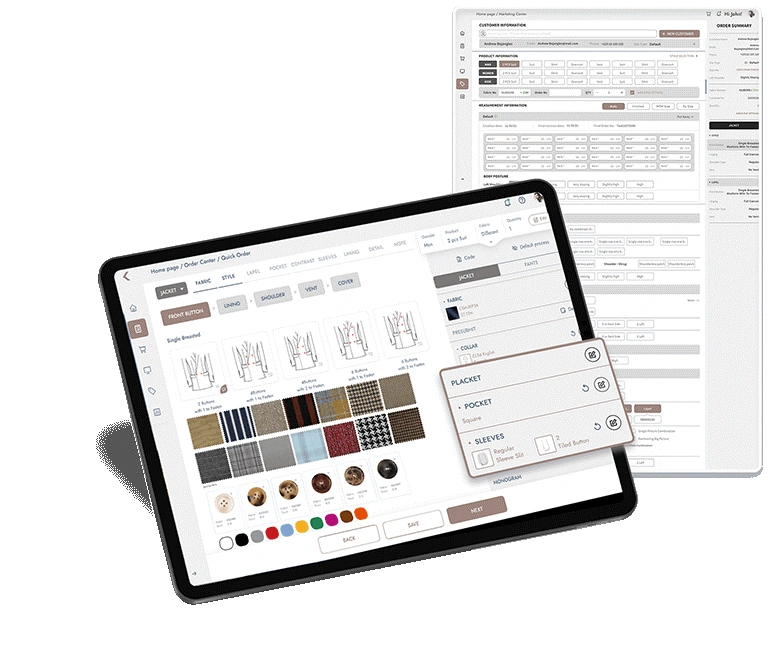
Customization and Personalization
Today's consumers are increasingly looking for suits that offer more than just a perfect fit; they want their garments to reflect their personal tastes and preferences. This trend sees a rise in demand for intricate details and bespoke elements in suits.
Personalized Demands on Details
Offering personalized details not only enhances the customer experience but also adds a unique value to each garment. It allows consumers to create a distinct look that sets them apart from off-the-rack options. This trend aligns with a broader movement towards individualism in fashion.
Popular Custom Options
1. Monogramming
One of the most sought-after customization options is monogramming. Adding initials or a name to the inside of a suit jacket or on the shirt cuffs gives the garment a personal touch. Monogramming in various fonts and colors is the new trend in 2024. It also offers a subtle yet distinct mark of personalization. Various brands like Gucci, Paul Smith, and Thom Browne add an individual touch with monogramming.
2. Unique Linings
The inside lining of a suit is an excellent canvas for personalization. Customers can choose from a variety of fabrics, colors, and patterns to make their suit uniquely theirs. Whether it’s a favorite color, a quirky pattern, or even a meaningful print, unique linings add an element of surprise and individuality to the suit.
Burberry features signature plaid linings, adding a touch of heritage to contemporary designs. Also, Dolce & Gabbana suits make a bold statement with embroidered silk linings or bold jacquard prints.
3. Fabric Selection
Allowing customers to choose their own fabrics, including sustainable and luxury options, can greatly enhance the personalization of a suit. This ensures that each suit not only fits perfectly but also aligns with the wearer’s preferences in terms of texture, weight, and environmental impact.
4. Detail Customization
Customizing details such as lapel width, pocket styles, button types, and even thread color for stitching gives consumers control over the final look of their suit. These options enable a high level of personalization, ensuring that every suit is a true reflection of the wearer's style.
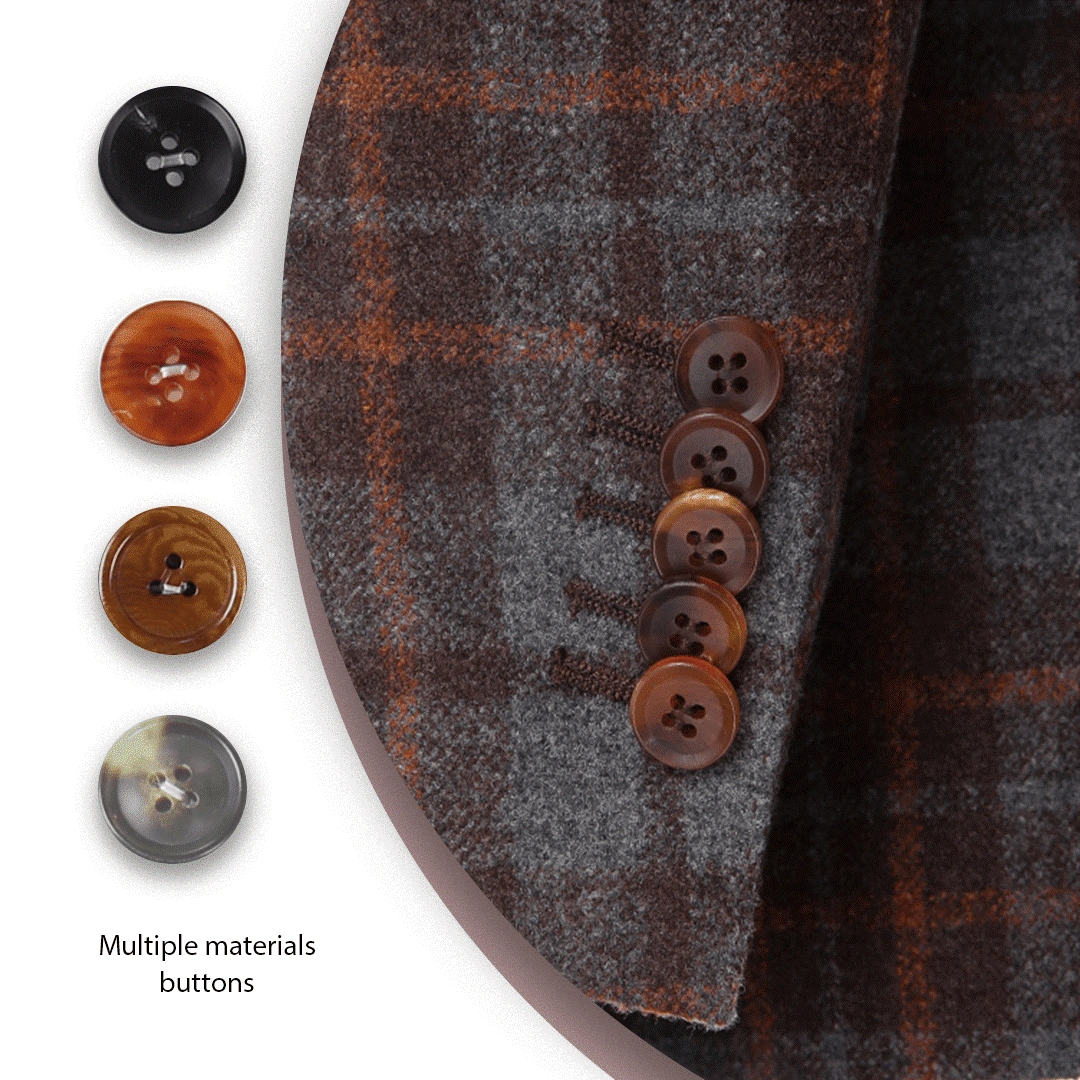
Marketing Strategies for 2024
In 2022, the global market for men's suits was valued at USD 46,752.36 million. It is projected to grow to USD 56,466.05 million by 2028, with a compound annual growth rate (CAGR) of 3.2% from 2022 to 2028. As the market for men's suits evolves, so too must the strategies for marketing them.
In 2024, a multifaceted approach that leverages digital marketing, fashion events, and customer engagement will be crucial for brands looking to stay competitive and connect with their audience.
Here are some key strategies to consider:
Digital Marketing Strategies
Digital marketing continues to be a dominant force, enabling brands to reach a broader audience through various online channels. With the increasing use of smartphones and social media, digital platforms offer powerful tools for targeting and engaging potential customers.
Brands are repurposing content across various social media platforms. From Instagram Stories to LinkedIn articles, they adapt their messaging to suit each channel. With AI-driven search algorithms, brands are optimizing their websites for voice search and semantic context. Long-tail keywords and natural language content are crucial for visibility.
Fashion Events and Shows
Fashion events and shows provide a tangible way for brands to connect with their audience and showcase their products in a live setting. These events can create buzz and excitement around a brand’s offerings.
Hosting or participating in fashion events helps build brand awareness and credibility. It also provides an opportunity to directly engage with customers, gather feedback, and create memorable experiences. Furthermore, pop-up showrooms allow you to experience their craftsmanship and fabrics firsthand.
Customer Engagement
Many men’s suit manufacturers utilize the power of email marketing to engage their customers about the latest trends in in men's suit industry. They send personalized emails to existing and potential customers.
They also offer personalized styling services with virtual or in-person consultations to guide customers in selecting the perfect suit. This can include one-on-one consultations, virtual fittings, and style recommendations based on individual tastes and needs. Personalization is a very important strategy as it enhances the shopping experience.
Conclusion
The men's suits market is rapidly evolving, with 2024 trends emphasizing sustainability, technological integration, and customization. Eco-friendly fabrics, smart textiles, and 3D body scanning enhance suit functionality and fit. Customization and personalization are key, allowing consumers to express their unique style through bespoke and made-to-measure services.
Brands like Kutetailor provide tailored experiences from precise measurements to fabric selection. Embracing these trends in men's suits positions brands like Kutetailor to thrive, offering innovative and personalized solutions that cater to modern consumer preferences.
FAQ
1. Are oversized suits in style?
Oversized tailoring is emerging as the next big trend in men's suits. From who can pull off the look to tips for achieving it well, the celebrities to emulate, and the best places to buy your oversized suit, these topics are more and more trending.
2. Are wide lapels in style in 2024?
In 2024, wide peak lapels are making a bold statement in men's fashion. The wide peak lapel adds a touch of sophistication and grandeur to men's suits, creating a powerful and confident aesthetic. As lapel preferences shift with fashion trends, this year is all about embracing the dramatic flair and elegance of wide-peak lapels.
3. Can big guys wear slim suits?
Why not? Don't hesitate to explore various fits. Whether it's slim fit or regular fit, choose based on your personal style preferences rather than just your size.
MORE 2024-07-23 -
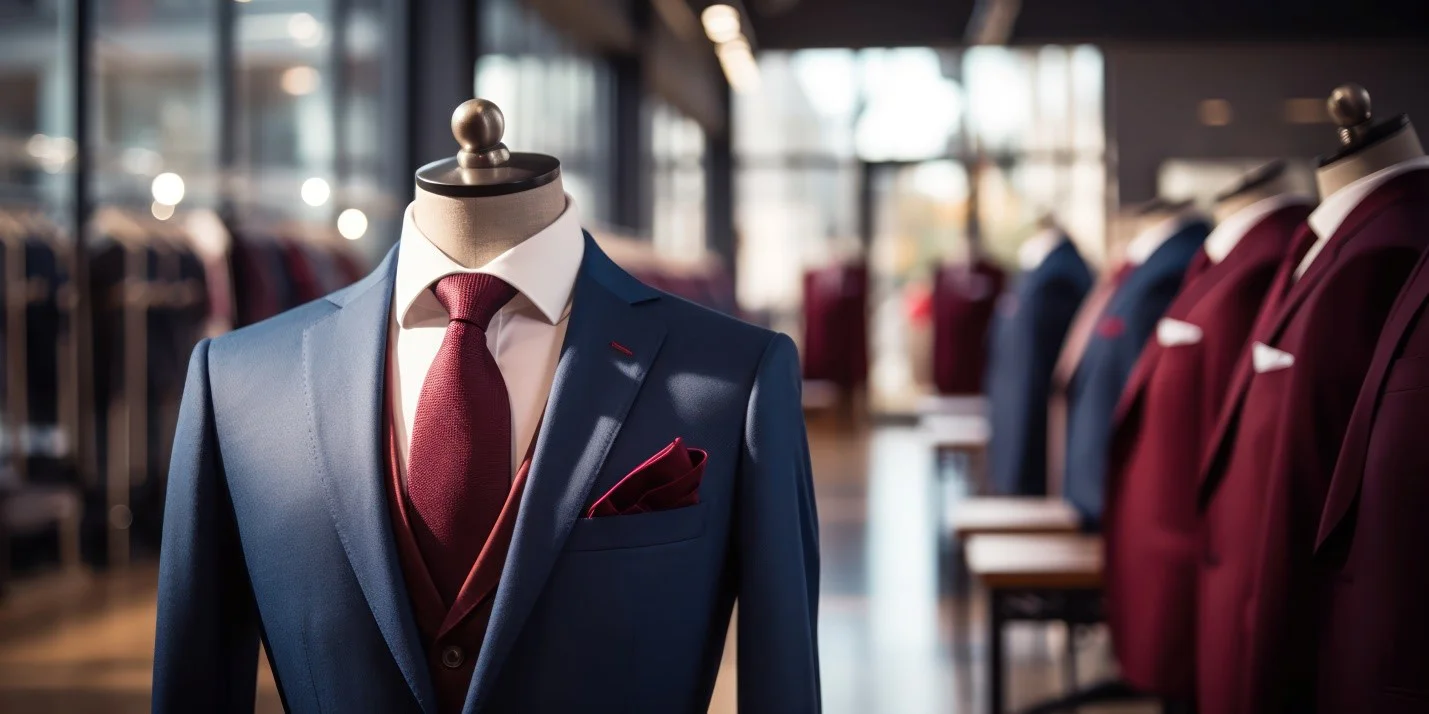 The Bespoke Clothing Market Analysis
The Bespoke Clothing Market AnalysisThere has been a significant increase in the custom clothing market over the past few years. This is due to people’s preference for niche fashion that is personalized. It offers customization, quality as well as being exclusive which makes it different from mass production. The market focuses on those who are looking for unique, properly fitting, and high-quality clothes customized according to their own wishes. Demand for bespoke clothing keeps surging up even as individualism and sustainable fashion trends gain traction.
Market Overview and Growth
Current Market Size and Growth
Currently, the bespoke clothing industry stands at some billions of dollars and is growing immensely fast. According to industry sources, this market may grow at a CAGR of approximately 7% over the next five years. Several factors contribute to this growth including increased knowledge about why custom-made clothes are more beneficial than other types in addition to technological improvements in tailoring and rising concern about sustainability among consumers.
The urban areas and trend-setting cities have led to the noticeable expansion of the bespoke clothing market making customers realize more income levels with the majority having a taste of personalization in their dressing patterns especially suits but not limited to casual wear, sportswear, and accessories hence could be described as versatile or diverse.
Key Drivers
Several key drivers are propelling the growth of the bespoke clothing market:
Customization Demand
Customers nowadays have an increasing desire for unique and personalized clothing that defines their individuality and fits them perfectly. This customization demand is not just limited to fit. It also includes fabric, design details such as embroidery or buttons, monogrammed initials, and custom-made linings.

Technological Advancements
Among the innovations in technology are 3D body scanning, digital tailoring and AI-driven design that have made bespoke clothing more affordable and accessible. They enable exact measurements, improved production procedures and virtual fitting rooms thus enhancing customer experience.
Sustainability
Consumers are turning to high-quality customized items that last longer rather than mass-produced fast fashion thanks to sustainable fashion. In addition, bespoke clothes focus on craftsmanship and durability which align with consumer preferences for eco-friendly fashion trends.
E-commerce
The rise of online platforms means people can easily access bespoke clothing services from the comfort of their homes. Online bespoke clothiers offer virtual consultations, digital designing tools and doorstep deliveries thereby making this once-elitist service reachable by a wider market.
Consumer Preferences and Behaviors
Customization Demand
Bespoke clothing is all about customization. Off-the-rack solutions no longer work for consumers who are willing to pay extra money for a dress that has been tailor-made to size alone.
The trend is most intense among younger generations like millennials and Generation Z who love standing out from the crowd through what they wear. This enables young individuals to create truly one-of-a-kind pieces that would otherwise be impossible by selecting every single detail of their garment – right from the fabric used to its precise style.
Another factor driving customization demand is the rising popularity of social media networks and influencer culture. Fashion influencers or celebrities often showcase their customized outfits on platforms like Instagram or TikTok leading other users into looking for equally tailored looks in fashion stores all over town. That’s why Gen Z loves following different celebrities and hence supporting tailor-shop businesses.
Buying Behavior
A number of things influence the buying behavior of consumers of bespoke clothing. They include:
Quality over Quantity: When it comes to bespoke clothing, people would rather have a handful of high-quality garments than many low-quality items. These are seen as valuable long-term investments due to their craftsmanship, attention to detail and fit.
Brand Loyalty: Once they find a brand that satisfies their customization needs today’s customers will most likely repeat purchases with this brand in the future. In order to promote loyalty among customers in this industry, the brands must offer personalized support, excellent quality and consistent delivery.
Market Landscape
The bespoke clothing market is a varied and vibrant mix of different players who address various needs and tastes. Heritage tailors and boutique ateliers represent the history of this sector whose bespoke offerings are based on traditional skills and have personal customer interaction as a mark.
These businesses are generally family-owned, with many generations of experience in making bespoke clothes that are equally works of art and comfort.
On the other hand, modern e-commerce platforms have emerged as significant actors operating within the bespoke clothing market by utilizing technology to make bespoke services more accessible to many. Kutetailor is one of the most impressive examples. This bespoke clothing manufacturer combines both online and offline shops, providing seamless and convenient services to clients.
Market Segmentation
The market of bespoke clothing can be classified into several categories founded on the following factors.
Demographics: When it comes to consumer preferences and expenditure, age groupings, gender as well as income levels play very vital roles. For instance, younger customers may concentrate more on customizability and trendiness whereas older ones may go after classic styles and superb artistry.
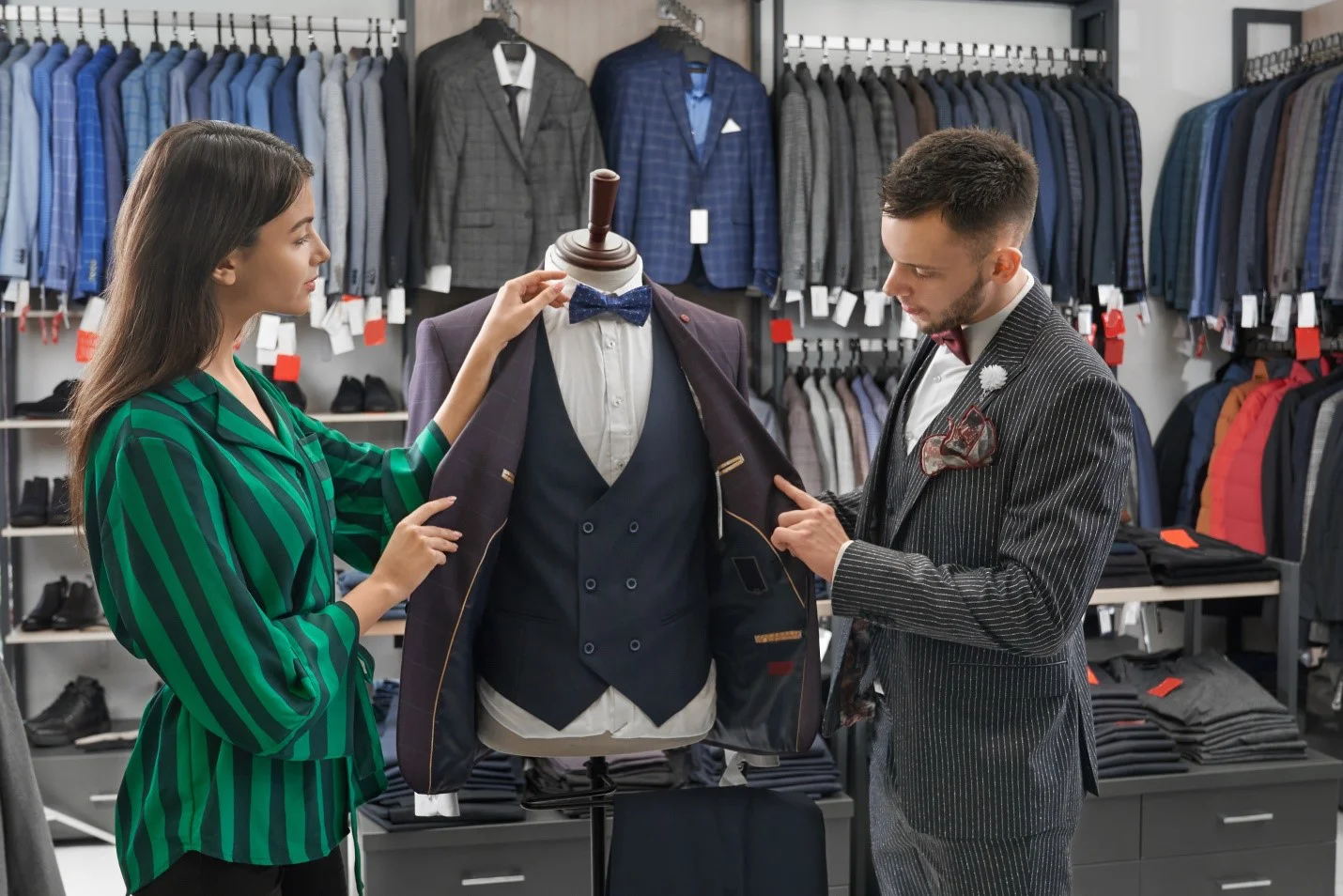
Geography: The demand for bespoke clothing varies by place with urban areas and other trendy cities experiencing high demand. Similarly, cultural differences affect fashion trends leading to varying preferences among the consumers resulting in regionally popular types of bespoke clothing that are specific to regions.
Product type: This encompasses a variety of things ranging from casuals to suits, dresses sportswear, or even accessories. Each product type serves different needs that vary according to different occasions which further separates this market into smaller segments.
Challenges and Opportunities
Supply Chain Management
Managing a complex supply chain is one of the most difficult tasks in the bespoke clothing industry. In order to succeed timely delivery of good quality materials must be ensured even then maintaining constant communication with clients must also be considered by companies.
Companies therefore should collaborate with suppliers who will ensure the availability of such resources as trims, and fabrics among others sourced from various parts of the world thus making logistics efficient, quality control processes robust, and capable of dealing with supply chain disruptions.
Scaling Customization
Maintaining quality while scaling customization is a huge problem. Due to increasing demands without letting down artistry through competition, skilled labor forces, as well as modern technologies, should be invested by companies.
It may involve the use of technology tools such as automation but what makes this market unique is the personalized attention given to every garment made by human beings. Attaining the right balance between tailoring tradition and technology is crucial for effective scaling customization.
Global Development
There are both challenges and opportunities that come with the growing internationalization of bespoke clothing markets On one hand there is potential for growth in developing countries but on the other hand, it is required that cultural differences and consumer preferences be understood.
To become successful globally, companies should take into account local fashion trends, tailor products accordingly, and build brand recognition in new markets. Moreover, businesses must overcome logistical issues related to international transport as well as customs regulations and find alternative sources within a country.
Cultural Influences on Bespoke Fashion
Modern Cultural Trends
The world of bespoke clothing has not been spared by recent cultural trends such as the emergence of influencer marketing and social media for example. As a result, customers are constantly looking for unique and stylish bespoke pieces based on fashion trends from celebrities and influencers.
To showcase their work, engage with potential customers, or develop loyal followings, bespoke clothing brands have a powerful tool known as social media.
Similarly, the body positivity and inclusivity movement in the fashion industry has also influenced the market for bespoke garments. This means that consumers need attire that will fit their individual body shapes leading to rising demand for custom-made clothes.
Consequently, many manufacturers are offering inclusive advertisement campaigns in more sizes as well as personalized fitting experiences in response to this trend.
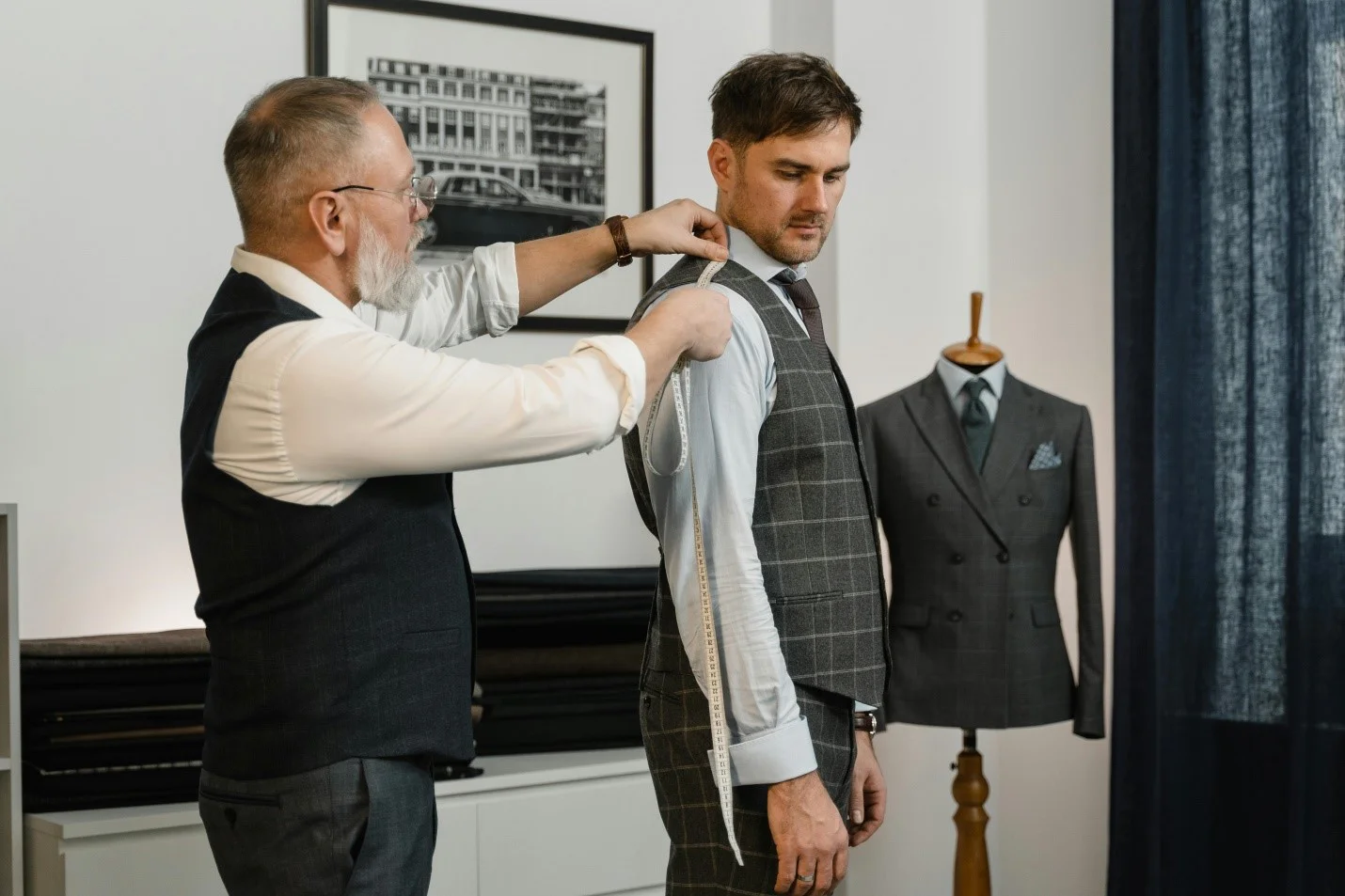
Cross-Cultural Influences
Through cross-cultural influences, the shape of the market for tailored clothes can be defined. It creates unique fusion styles reflecting various cultures which appeal to people all over the world thus making designers universal brands while maintaining traditional crafts in global space through smart designs.
An example of the fusion of Western and Eastern fashion elements is the creation of new bespoke attire using traditional clothes, patterns, and sewing techniques from different nations. This combination not only gives distinctive touches to bespoke wear but also enables consumers to make a statement about themselves by choosing clothes rich in variety and culture.
Future Outlook
The future looks bright for the market for bespoke clothing as it is expected to grow further over the next few years. There are several trends that will shape the future of this market.
Technological Advancements: Technological advancements in custom cloth production such as AI-powered design capabilities, virtual fitting rooms and advanced fabric technologies will revolutionize even more the field of bespoke clothing.
These innovations will contribute to better customization processes, ensure accurate fitting measurements and simplify manufacturing processes thus making formal tailored clothing become more accessible to a wide range of clients.
Sustainability: Emphasis on sustainability and ethical fashion will continue driving demand for bespoke apparel. Nowadays customers are increasingly demanding high-quality tailor-made items that prevent post-order wastage while promoting responsible consumption.
In addition, any tailoring firm that decides to uphold eco-friendly materials use or take part in fair trade practices through their supply chain stands a good chance to outdo others within this niche market.
Global Expansion: As disposable incomes increase and people seek personal fashion solutions, emerging markets offer great potential for growth in the bespoke clothing industry. Companies that manage cultural differences well enough can adapt their offerings to meet regional needs; hence they hold strong chances to expand abroad globally.
Conclusion
In conclusion, it can be said that the Bespoke Clothing Market is a dynamic and fast-evolving industry. Understanding market trends, customer behavior, and competitive landscape is vital for companies intending to prosper in this space.
Thus growing demand for tailored fashions continues boosting its development along with improvements in technology as well as sustainable trends besides e-commerce uptake rates growing higher than ever before.
However, due to issues related to scaling customization or managing its supply chain, the industry has much room for growth and development through innovation on a global scale. As companies stay ahead of events and embrace new ideas, they can develop business opportunities in bespoke clothing and add value to their customers.
References:
1. Custom Made Clothes Market Size, Share, Growth, And Industry Analysis By Type (Coat, Skirt, Pants, Shirt, Denim, and Others) By Application (Online and Offline) Regional Forecast To 2032
2. Custom Apparel Market Analysis APAC, North America, Europe, Middle East and Africa, South America - US, China, UK, Germany, India - Size and Forecast 2024-2028
3. Global Custom Clothing (Made to Measure) Market Growth Insights By Types (Coat, Skirt, Pants, Shirt), By Applications Covered (Men, Women) & Region - Forecast to 2031
MORE 2024-07-12 -
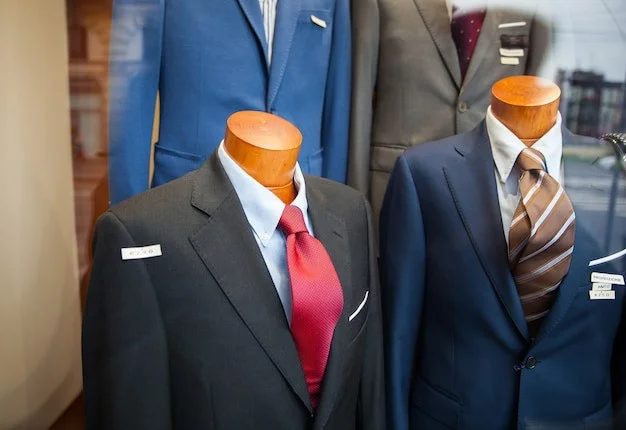 Top 10 Bespoke Suit Manufacturers: Guide to Timeless Elegance
Top 10 Bespoke Suit Manufacturers: Guide to Timeless EleganceIn a world where first impressions matter, nothing speaks volumes like a well-tailored suit. Bespoke suits are more than just clothing; they are a statement of sophistication, confidence, and individuality. Unlike off-the-rack options, bespoke tailored suits are crafted with attention to detail, ensuring a perfect fit and unparalleled quality.
Choosing the right bespoke suit tailor is crucial, as the expertise and craftsmanship of the tailor can transform a simple piece of fabric into a garment that not only complements different body shapes but also reflects personal style.
In this article, we explore the top 10 best bespoke suit manufacturers, each renowned for their craftsmanship, heritage, and dedication to creating suits that are as unique as the individuals who wear them.
What is a Bespoke Suit?
A bespoke suit is a garment made to a customer's precise measurements and specifications. Unlike made-to-measure or off-the-rack suits, bespoke tailored suits involve a highly personalized process where every detail, from fabric choice to fit and styling is crafted to the individual's preferences and physique by a skilled tailor.
What Makes the Best Bespoke Suit Manufacturer?
Bespoke tailored suits are an investment that reflects one's style, taste, and commitment to quality. Partnering with the right manufacturer is crucial to bringing the vision to life. When it comes to finding the best bespoke manufacturer in the world, there are several key factors to consider.
1. Quality and Craftsmanship
A top bespoke suit manufacturer crafts each piece with precision and care. Every stitch, seam, and detail reflects their dedication to perfection. High-quality fabrics and expert tailoring techniques ensure a suit that looks incredible and lasts a lifetime.
2. Reputation
A strong reputation is a hallmark of excellence. The best bespoke suit manufacturers have earned the trust and admiration of their clients over the years. They are known for their reliability, skill, and the stunning suits they create.
Therefore, choose a manufacturer who is well-versed in various fabrics, designs, and fit principles, ensuring your suit is both stylish and perfectly tailored.
3. Customization Options
The best manufacturers offer endless customization possibilities. From fabric selection to lapel style, pocket design, and lining choices, every aspect of the suit is tailored to your preferences. This ensures that your suit is not only unique but also perfectly suited to your style and needs.
4. Customer Service
Exceptional customer service sets the best manufacturers apart. They listen to your needs, offer expert advice, and ensure a seamless and enjoyable experience. From the first consultation to the final fitting, they make you feel valued and involved in the process.
5. Post-Purchase Support
Opt for a manufacturer who offers support even after you've received your suit. Whether it's making minor adjustments or providing maintenance tips, ongoing support ensures your suit maintains its fit and quality over time.
6. Attention to Detail
In the world of bespoke tailoring, details matter. The finest manufacturers obsess over every aspect of the suit-making process, from the initial measurements to the final fitting. Their commitment to precision ensures that your suit fits like a glove and exudes elegance.
Top 10 Best Bespoke Suit Manufacturers
1. Henry Poole & Co
Henry Poole & Co, founded in 1806, is a legendary name on Savile Row in London. Known for creating the modern dinner jacket for the Prince of Wales in 1865, they have been leaders in bespoke tailoring for over 200 years. Henry Poole & Co. offers a wide range of bespoke custom suits, including business suits, formal wear, morning coats, and sporting attire, all made from the finest fabrics.
Known for their traditional British tailoring techniques and use of high-quality materials, each suit is handcrafted with great attention to detail. With a history of dressing royalty and famous figures like Winston Churchill and Charles Dickens, their reputation is top-notch. At Henry Poole & Co., you can expect a bespoke experience that is both personal and professional, ensuring your suit fits perfectly and matches your style.
2. Alfred Dunhill

This prestigious British luxury brand for men has been a symbol of elegance since 1893. Dunhill offers a wide range of products, including bespoke suits, ready-to-wear clothing, leather goods, accessories, and fragrances. Dunhill's commitment to quality and sophistication has earned it a strong reputation.
Their bespoke tailoring service is highly esteemed, providing clients with custom-made suits that reflect individual style and precision. The craftsmanship and attention to detail in each piece are exceptional. Each Dunhill jacket is crafted with about 180 separate pieces and undergoes 200 precise operations by skilled artisans. With a history of excellence, Alfred Dunhill continues to be a favorite among those who value timeless style and luxury.
3. Kutetailor

Kutetailor is one of the renowned custom clothing manufacturers celebrated for its exceptional ability to cater to a diverse clientele. With a focus on extensive customization options, Kutetailor crafts bespoke suits that perfectly match the individual needs and styles of their clients, whether for business attire, wedding suits, or casual sophistication.
What sets Kutetailor apart is their dedication to innovation, seamlessly blending traditional tailoring techniques with modern design elements. Additionally, Kutetailor is the trusted supplier for many well-known tailor shops worldwide, highlighting their influence in the global bespoke tailoring industry.
Moreover, Kutetailor boasts vast pattern data of garment craftsmanship, catering to the creative freedom of designers and ensuring each bespoke creation meets exacting standards of quality and style. Through these innovations, Kutetailor has earned a stellar reputation, making Kutetailor a top choice for those seeking bespoke tailoring that stands out in both style and sophistication.
4. Antonio Liverano
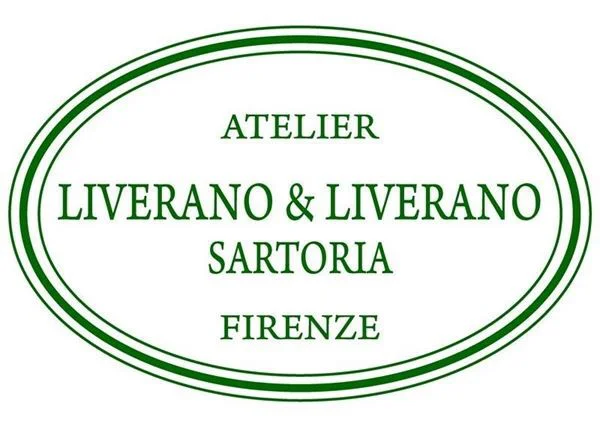
Antonio Liverano is a master bespoke suit tailor based in Florence, Italy. It is known as one of the world's foremost bespoke suit tailors. Each Liverano suit is a testament to traditional Italian tailoring, characterized by its effortless elegance and impeccable fit.
Liverano’s famous "Florentine style," features soft shoulders, a defined waist, and a natural silhouette that enhances the wearer's physique. What sets Liverano apart is his commitment to personalized service, where each client receives individual attention and guidance throughout the bespoke process.
Liverano blends traditional techniques with a keen sense of style, evident in details like his signature doughnut-patterned scarves. While his craftsmanship is premium, Liverano's suits are prized for their impeccable quality and refined elegance, making him a standout figure in the world of bespoke tailoring.
5. Oxxford Clothes
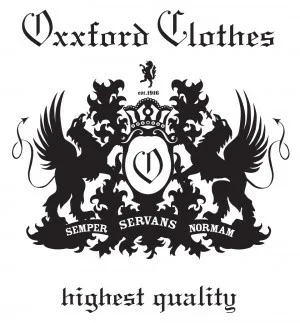
Founded in 1916 by Louis and Jacob Weinberg in Chicago, Illinois, Oxxford Clothes has established itself as a paragon of American bespoke tailoring. Their distinguished clients include icons such as Joe DiMaggio, Gary Cooper, and Clark Gable.
Oxxford Clothes sources natural fabrics from top mills in Italy, Spain, and the UK, ensuring superior quality and luxury. Each Oxxford suit is hand-cut, with painstaking attention to detail like matching stripes and plaids at every seam. Hand-stitched collars, lapels, and buttonholes further showcase their dedication to craftsmanship. Crafting an Oxxford jacket involves 165 steps, including 33 for pressing, with the final pressing alone taking over an hour.
This dedication to tradition and innovation ensures that every Oxxford garment embodies timeless elegance and superior quality, solidifying their reputation as a leader in American bespoke tailoring.
6. Gieves & Hawkes
Founded in 1771, Gieves & Hawkes is upholding the spirit of Savile Row for over two centuries. From King George III to modern figures like Prince William, Sir Winston Churchill, Ian Fleming, and Admiral Lord Nelson, Gieves & Hawkes some of the most influential individuals are their clients.
Known for their bespoke tailoring, Gieves & Hawkes offers a personalized experience that begins with consultations at their historic Savile Row headquarters. With fabrics sourced from esteemed English mills, they continue to redefine luxury menswear. Embodying the essence of British tailoring tradition, Gieves & Hawkes has set the standard for bespoke tailoring worldwide.
7. Dayang
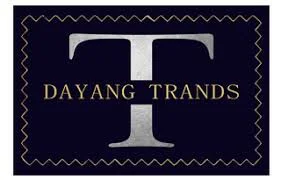
Dayang Group, with 36 years of dedicated experience, stands as one of the world's largest suit manufacturers. Specializing in bespoke tailoring, Dayang Group has earned acclaim for its extensive expertise and commitment to crafting high-quality suits.
Dayang’s suits are handcrafted by skilled artisans, ensuring impeccable quality. It offers endless options of fabric, color, lapel style, buttons, and linings. Personal touches like monogramming make each suit unique.
Dayang Customization has established itself as a global leader in advanced men's clothing customization. It delivers high-quality single-cut customization services to renowned companies and brands across the United States, Canada, the United Kingdom, the Netherlands, and beyond.
8. Richard James

Richard James is a bespoke Savile Row tailor and contemporary menswear company. Founded in 1992 by designer Richard James and his business partner Sean Dixon, the brand has left an indelible mark on British tailoring. Their signature style is elegant, clean-lined suits with waisted jackets, cut slightly higher at the armholes to accentuate the silhouette.
Richard James is the only Savile Row tailor to have won the British Fashion Council’s Designer of the Year award. Three decades ago, they burst onto the scene with a burst of color and energy, and today, they continue to redefine Savile Row’s sartorial landscape.
9. Suitsupply

Suitsupply, founded in Amsterdam in 2000 by Fokke de Jong, is a Dutch men’s suit and fashion brand that has made waves in the world of tailored menswear. Whether you're gearing up for a business presentation or a special event, Suitsupply's attention to detail ensures every stitch aligns with your unique personality and preferences.
With fabrics sourced from renowned Italian mills like Vitale Barberis Canonico and Redam, their suits are expertly crafted, combining traditional tailoring techniques with modern sensibilities. With over 150 stores worldwide, Suitsupply provides personalized styling, fit advice, and alterations. Whether online or in-store, gentlemen can find their perfect fit and elevate their style.
10. Stefano Ricci
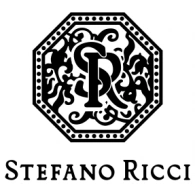
Headquartered in Fiesole, Stefano Ricci is a luxury menswear brand, that produces exquisite menswear and accessories, crafted with Italian flair. Their line of suits is renowned for its exclusivity, luxury, and unparalleled quality. Each suit is hand-crafted, reflecting the brand's dedication to excellence.
The brand's bespoke service offers discerning gentlemen the opportunity to create personalized masterpieces. Clients have the privilege of selecting from the finest fabrics and participating in the customization of every aspect of their suit, from the cut and style to the smallest details like buttons and linings.
Comparison Chart
Brand Offerings Average cost Turnaround Time Henry Poole & Co. Traditional Savile Row Tailoring, Bespoke tailored suits, shirts, and garments High-end Approximately 8-12 weeks Alfred Dunhill British luxury menswear, custom, and bespoke menswear High-end Varies based on customization Kutetailor Custom-made suits and apparel for fashion brands, Extensive customization options Customizable 7 days lead time Antonio Liverano Handcrafted bespoke suits, Florentine tailoring style High-end Approximately 70 hours per garment Oxxford Clothes Luxury men’s suits and sport coats, hand-cut and stitched, American bespoke tailoring High-end Varies based on customization Gieves & Hawkes Bespoke wear suits with traditional British tailoring, historic clientele High-end Approximately 8-12 weeks Dayang Intelligent clothing customization platform for domestic clothing companies in China Customizable Varies based on complexity Richard James Modern cuts, vibrant colors, tailored fit High-end Approximately 8-10 weeks Suitsupply Modern tailored menswear Mid-range Off-the-rack or made-to-measure Stefano Ricci Exquisite Italian menswear, including suits, ties, and accessories Ultra-luxury Varies based on customization *Prices can vary widely based on fabric choice, complexity of design, and brand prestige.
Conclusion
In the world of bespoke suits, finding the perfect tailor isn't just about style, it's about crafting a piece of art that embodies your personality.
Whether you're preparing for a special occasion or enhancing your everyday wardrobe, choosing the right manufacturer is the first step towards excellence. So, don't settle for the ordinary. Seek out the brand that understands your vision and transforms it into a masterpiece that you'll cherish for years to come.
FAQ
1. What countries are the most famous for high-quality bespoke tailoring?
Italy and England are the most famous countries for high-quality bespoke tailoring. Italy is known for luxurious fabrics and craftsmanship, and England is acclaimed for its traditional techniques on Savile Row. However, there are more and more known bespoke suit manufacturers worldwide, not just in Italy and England.
2. How much does a made-to-measure suit typically cost?
The cost of a bespoke suit can vary widely depending on factors such as the tailor's reputation, location, choice of fabric, and level of customization. On average, prices start from around $3,000 to $5,000 USD and can go up significantly depending on the materials and complexity of the design.
3. How do I choose the right fabric for my bespoke suit?
Consider factors like climate, occasion, and personal comfort. Wool, linen, and cotton are popular choices, each with their own benefits.
MORE 2024-07-12 -
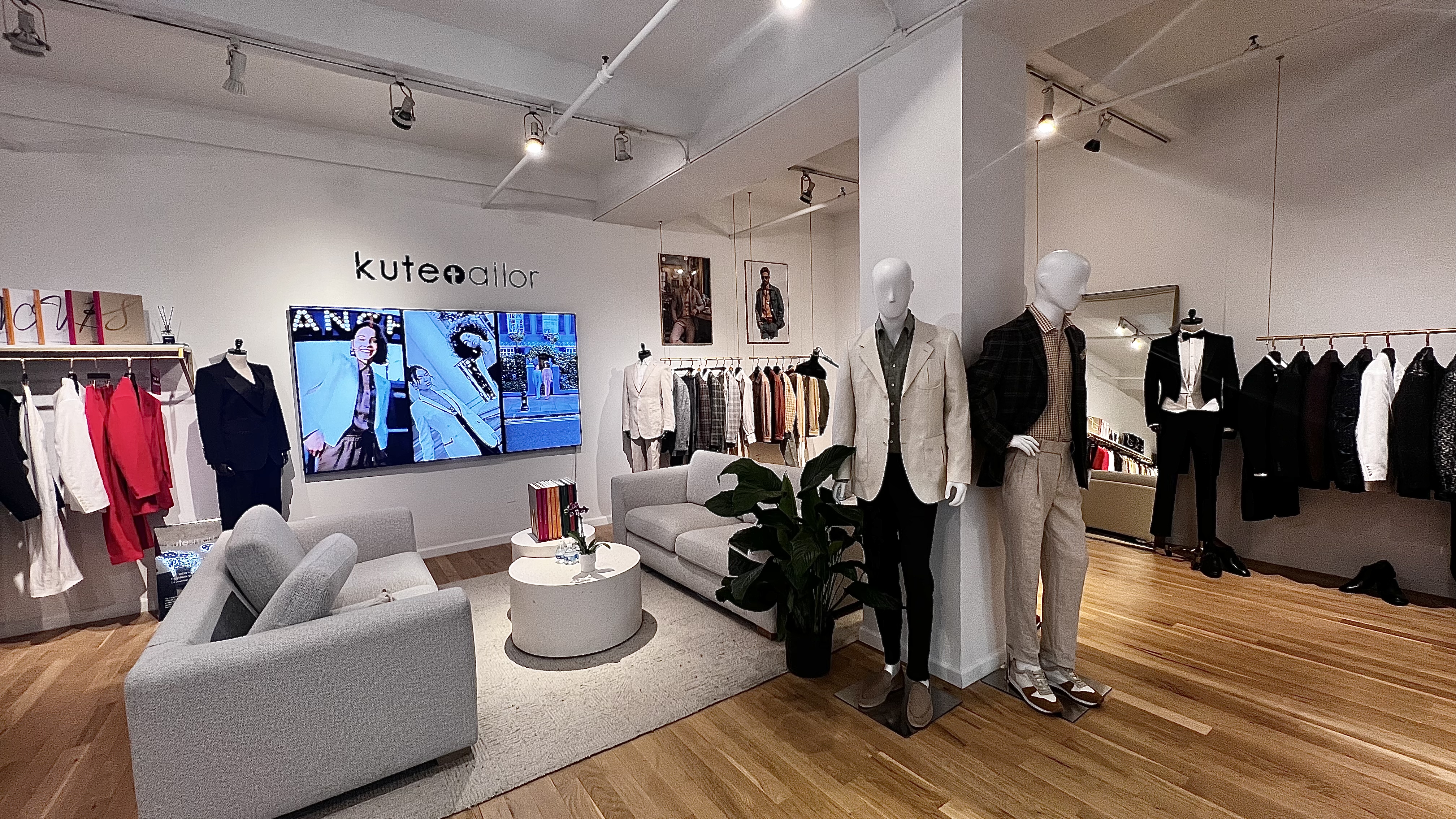 The Best Clothing Manufacturer Kutetailor Expands to New York
The Best Clothing Manufacturer Kutetailor Expands to New YorkKutetailor, a premier custom clothing manufacturer distinguished by high-quality custom apparel and exemplary customer care, hosted a trunk show in New York City from January 17 to 20 to strengthen its presence in the US as one of the best clothing manufacturers. Boasting over many years of experience in the MTM suit sector, we have emerged as a trusted partner for fashion labels and designers worldwide. The trunk show provided us with an ideal platform to display our latest collections to New York’s fashion community. Attendees’ enthusiasm strengthened our beliefs regarding opportunities in the large US fashion industry.
What is a Trunk Show?
A trunk show is like a pop-up retail event where the manufacturers, designers, or their salespeople can display and sell their lines directly to customers. Back in the day, traveling sales guys would carry samples in trunks to different stores and showrooms to show people what they had. Even today, trunk shows allow designers to have face-to-face interactions with clients, gain valuable market insights, and establish stronger relationships. For customers, trunk shows offer an exclusive shopping experience with one-on-one assistance from the designers. Overall, trunk shows boost visibility and sales for emerging brands.
Kutetailor’s Memorable Attendance at the Trunk Show
At our trunk show, we unveiled our spring and summer collection featuring relaxed silhouettes and eco-friendly fabrics. The collection included a wide range of MTM suit outfits ideal for the warmer seasons. Flowy fabrics in various pleasing tones dominated the collection. As one of the best clothing manufacturers, we also launched a special line of clothing for working from home. The collection was well-received for its soothing color palettes and comfortable yet stylish designs catering to the new hybrid work-fashion trends.
Additionally, we announced the establishment of our Kutetailor New York branch to oversee our operations in the USA. Our CEO, Sherry Zhang, attended the trunk show in person and addressed the unveiling ceremony, speaking about her vision to disrupt the American custom clothing industry with Kutetailor’s outstanding quality, ethical production practices, and personalized customer experience. She believes the new venture will allow us to build stronger bonds with our clients and partners through ongoing local interactions. The event provided the perfect occasion to introduce our brand as one of the best clothing manufacturers and our capabilities to New York’s vibrant fashion community.
Reasons for Establishing the New York Branch Company
With the launch of our New York branch, we aim to take our business to the next level and make a bigger impact in the USA.
1. Strategic Focus on the US Market
The large size and continued growth of the US fashion industry was highly attractive to drive our global expansion. New York, as the epicenter, also allows our best clothing manufacturer brand access to major clients, events, and networking opportunities. With local expertise, we can leverage industry insights to tailor our offerings best for the American market.
2. Real-Time Awareness of Fashion Trends
Being located in New York gives our teams a front-row view of constantly changing trends. By interacting directly with local designers, stylists, and media, our in-house team gains a stronger understanding of aesthetic and cultural influences. This timely feedback helps our best clothing manufacturer brand ideate more relevant collections.
3. Better Service for American Clients
With dedicated teams based in New York, we can provide more personalized services to our US partners. Clients will experience quicker sample approvals and shorter lead times through better oversight of production timelines and localized meeting scheduling based on US time zones. Our goal as one of the best clothing manufacturers is to deliver an unprecedented client experience through this strategic expansion.
Conclusion
In summary, the successful trunk show in New York marked the beginning of Kutetailor’s expansion plans to strengthen our presence in the USA. With outstanding production capabilities and client-centric services, we aim to be the best clothing manufacturer and preferred manufacturing partner for emerging fashion startups and businesses. Being located in the cultural and commercial epicenter of American fashion will allow us to form influential partnerships and alliances with major fashion houses and retailers. To know more about our services and latest collections, feel free to contact us. We look forward to serving the flourishing American fashion industry from our new branch in New York.
MORE 2024-02-21

